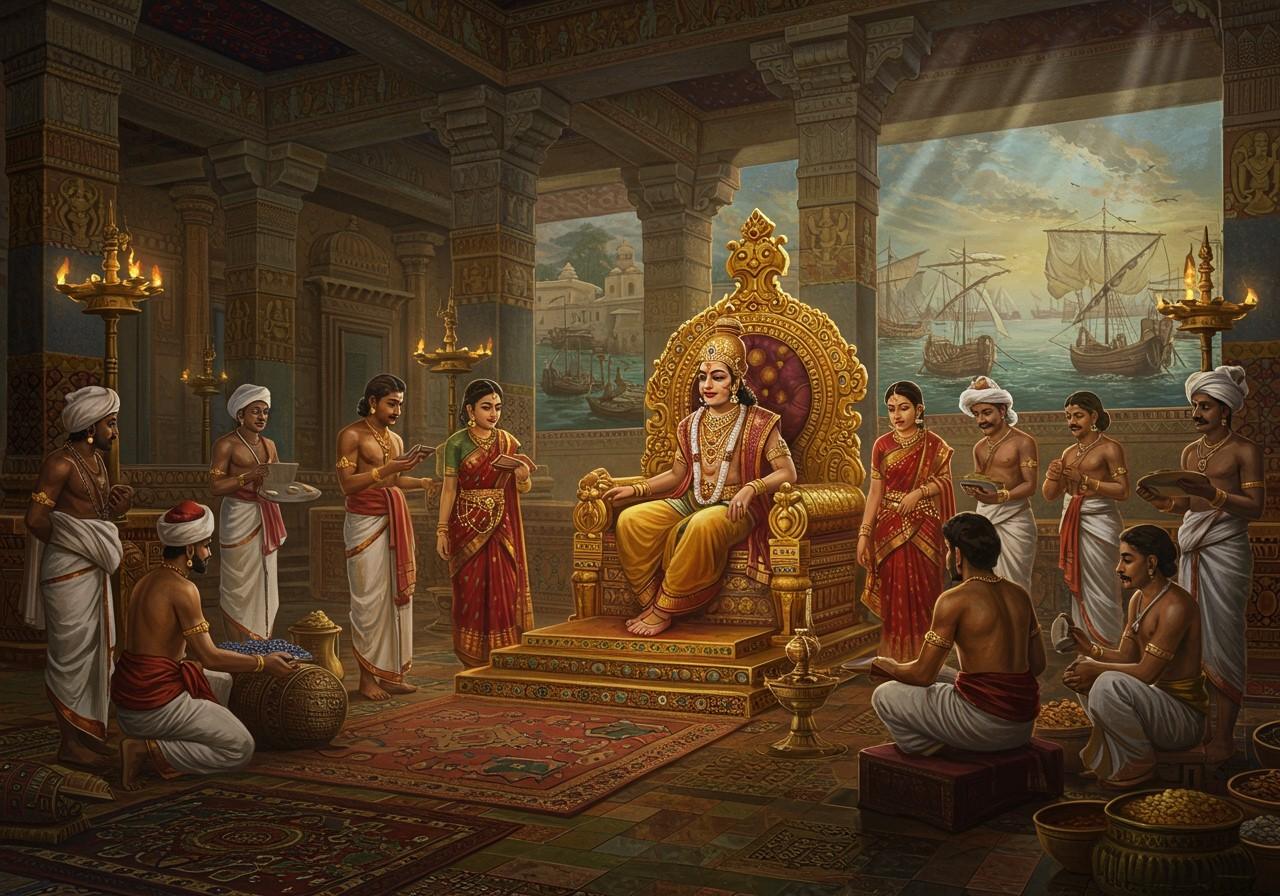
The Pandyan dynasty, a prominent power in South India, ruled for centuries, from the early 4th century BCE to the 17th century CE. With Madurai as their capital, they controlled vast territories across the southern and southeastern parts of the Indian peninsula. Known for their robust trade networks, rich cultural heritage, and sophisticated administration, the Pandyas left an indelible mark on the history of Tamil Nadu. This article delves into the intricacies of their administration, economic prowess, and enduring legacy.
Historical Overview
To truly grasp the Pandyan Empire’s achievements in administration and economy, understanding their historical context is essential. Emerging in the 4th century BCE, the dynasty expanded its influence across modern-day Tamil Nadu, Kerala, and parts of Sri Lanka. Early Pandyan rulers laid the groundwork for the empire’s growth and prosperity. Historical sources like inscriptions, literary texts, and accounts from Greek authors and Roman interactions offer valuable insights into their governance and trade practices.
Administrative Structure
The Pandyas implemented a hierarchical and efficient administrative system. At the apex was the king, holding supreme authority and titles such as Pandiyatirasan and Kodanda Raman. The empire was divided into provinces and districts, overseen by local chieftains responsible for maintaining law and order. A council of ministers, known as the Amatya Sabha, advised the king on matters of state. A well-defined judicial system ensured justice and fairness, while infrastructure projects like irrigation systems and temple construction demonstrated the dynasty’s commitment to public welfare.
Revenue and Economic Activities
The Pandyas implemented a sophisticated revenue system to fuel their economic growth. Land taxes, trade tariffs, and tributes from conquered territories formed the core of their revenue streams. They employed meticulous land measurement and taxation methods, including the ‘Vetti’ system. Fertile river valleys like the Vaigai and Tamiraparani supported thriving agricultural production, further contributing to the empire’s wealth. Taxes were levied on commercial activities in bustling markets and ports, with designated revenue officers, known as Kanakkar, managing the finances effectively.
Trade Routes and Economic Prosperity
The Pandyan Empire was renowned for its extensive trade networks, spanning both within India and internationally. Maritime routes connected them to Southeast Asia, China, and even the Roman Empire. Key ports like Korkai, Alagankulam, and Kayal buzzed with commercial activity, facilitating the exchange of goods such as spices, pearls, ivory, and textiles. Merchant guilds played a vital role in regulating trade practices and upholding quality standards. This vibrant international trade significantly impacted the local economy, fostering cultural exchange and enriching the empire.
Cultural Patronage and Legacy
The economic prosperity of the Pandyan Empire enabled substantial cultural and religious patronage. Magnificent temples were constructed, showcasing the dynasty’s architectural prowess. Arts, literature, and education flourished under their rule, with significant contributions to Tamil literature, including Sangam poetry. The economic surplus also funded public works and religious ceremonies. The Pandyan era witnessed advancements in architecture, sculpture, and urban planning, leaving a lasting legacy on South Indian art and culture.
Connect with South Indian Tradition at Poojn.in
Experience the rich cultural heritage of the Pandyan Empire through sacred items and ritual materials available at Poojn.in. We offer a diverse range of products that connect you to this vibrant tradition:
- Panch Ratna Set (₹5.00): This set of five precious stones holds deep significance in South Indian traditions, symbolizing prosperity and auspiciousness. Acquire our authentic Panch Ratna set and maintain a sacred connection to these ancient customs. Poojn.in ensures the quality and authenticity of these precious stones, allowing you to incorporate them into your spiritual practices.
- Holy Idols: Explore our extensive collection of 48+ meticulously crafted idols, including deities revered in South Indian temple traditions. Each idol is crafted with precision and reverence, embodying the divine essence of the deities they represent. Find the perfect idol to grace your home shrine and enhance your spiritual connection.
- Paddy Seeds: Paddy seeds are an essential part of South Indian pujas. They symbolize prosperity and abundance. Our fresh, selected paddy seeds are perfect for use in all your auspicious ceremonies.
- Black Sesame Seeds: Known as “kala til” or “krishna til,” black sesame seeds are highly valued in South Indian rituals. They are believed to ward off negative energies. Buy premium quality black sesame seeds from Poojn.in for your puja needs.
- Green Moong Dal: Green moong dal is a staple ingredient in South Indian cuisine and is also used in various pujas. Our green moong dal is of the finest quality and perfect for all your ceremonial needs.
Visit Poojn.in or our physical stores to discover our complete collection of South Indian puja items and ritual materials. We offer pan-India delivery, making these traditional items accessible to everyone seeking to honor their heritage. (Prices may vary; please check our website for the most up-to-date rates.)
Conclusion
The Pandyan Empire’s well-structured administration, thriving economy, and flourishing cultural landscape are a testament to their sophisticated governance and strategic vision. Their efficient revenue systems, coupled with extensive trade networks, ensured the empire’s prosperity and longevity. This economic strength empowered them to become patrons of art, culture, and religion, leaving an enduring legacy that continues to inspire and enrich South Indian history. By understanding the Pandyan Empire’s accomplishments, we gain a deeper appreciation for the complex systems and rich heritage that shaped their remarkable success.


